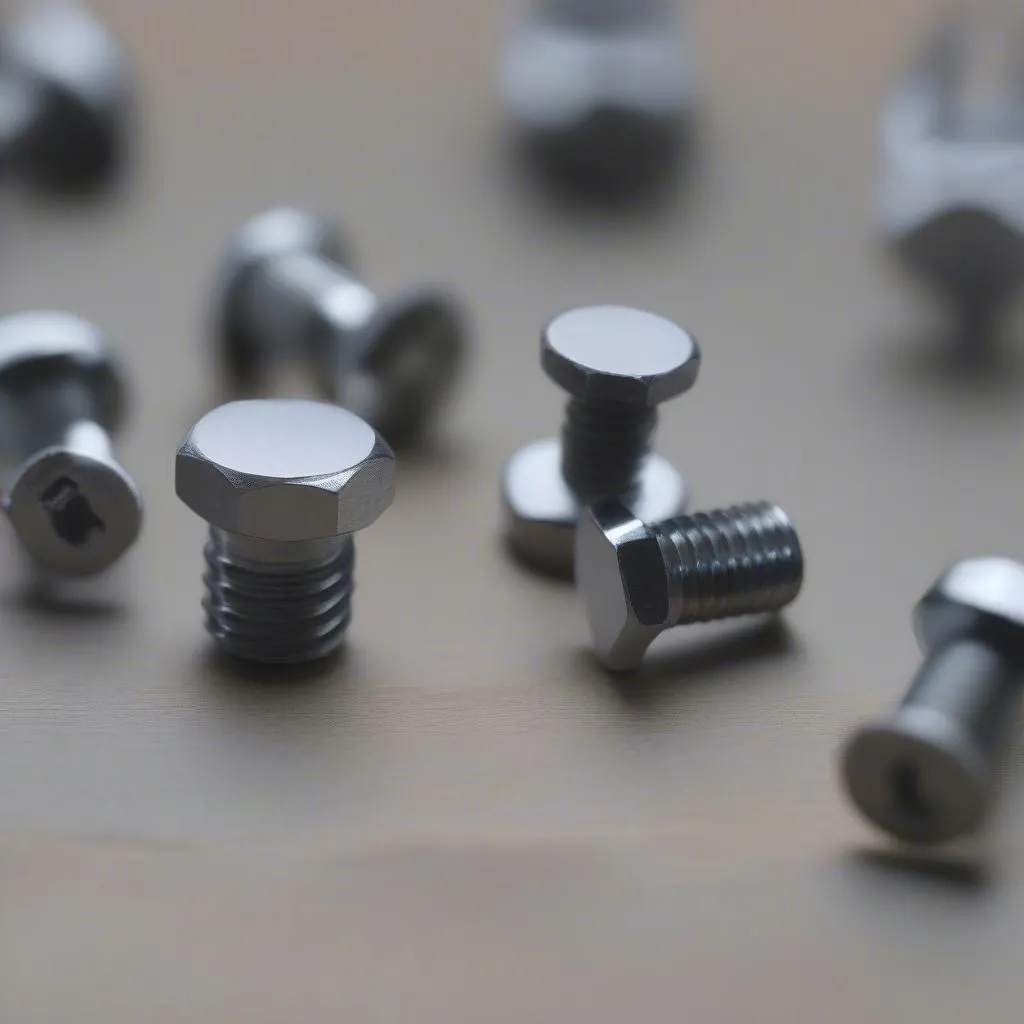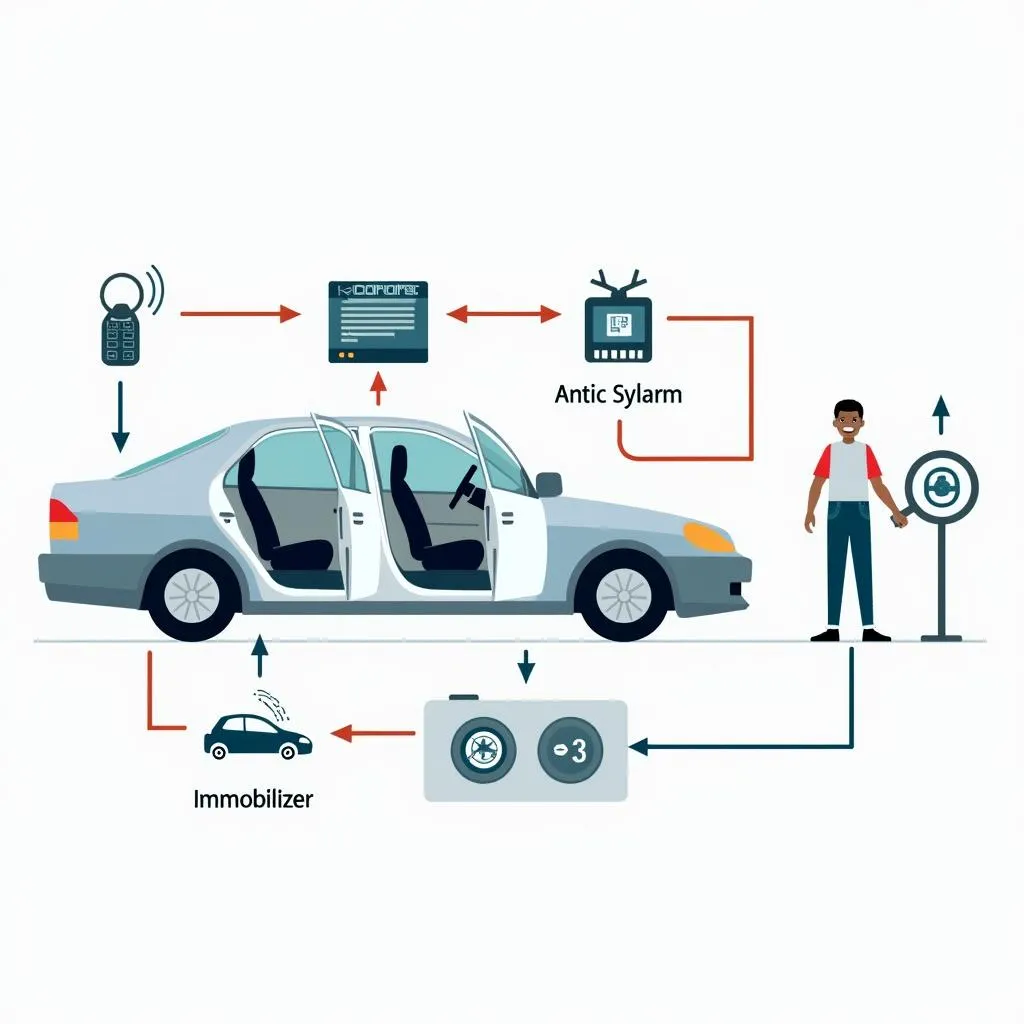Dealing with anti-theft screws can be a real pain, especially when you need to access a vital component in your car. Whether you’re a seasoned DIY mechanic or a car owner facing this challenge for the first time, this guide will provide you with the knowledge and techniques to successfully remove these stubborn fasteners.
Understanding Anti-Theft Screws and Why They Exist
Anti-theft screws, also known as security screws, are specially designed fasteners that deter tampering and theft. They feature unique drive designs that require specialized tools for removal, making it difficult for someone with standard tools to loosen them. You’ll often find them used on:
- Car stereos and navigation systems: These are high-value targets for thieves.
- License plates: Preventing theft and unauthorized removal.
- Exterior trim and accessories: Securely attaching parts like side mirrors or roof racks.
Identifying Anti-Theft Screws
Anti-theft screws come in a variety of head designs. Some common types include:
- One-Way Screws: These screws can only be driven in, not out, with a standard screwdriver.
- Pin-in-Hex Screws: These have a small pin in the center of the hex socket.
- Spline Drive Screws: These have a groove or multiple grooves around the head instead of the usual slots.
- Clutch Head Screws: They have a bow-tie shaped recess.
Tools for Removing Anti-Theft Screws
Fortunately, there are specialized tools designed to remove anti-theft screws. The type of tool you need will depend on the specific screw head design. Here are some options:
- Security Bit Sets: These sets include a variety of bits that fit different anti-theft screw heads. They are readily available at auto parts stores and online retailers.
- Screw Extractors: If a screw is stripped or damaged, a screw extractor can often remove it. These tools grip onto the damaged screw head, allowing you to turn it out.
- Left-Handed Drill Bits: In some cases, a left-handed drill bit can be used to drill out the screw head.
How to Unscrew Anti-Theft Screws
- Identify the Screw Type: Carefully examine the screw head to determine the type of anti-theft design.
- Select the Correct Tool: Choose the appropriate security bit or extraction tool from your set that matches the screw head.
- Apply Firm Pressure: Press the tool firmly into the screw head to prevent slipping and stripping.
- Turn Counterclockwise: Using a steady and controlled motion, turn the tool counterclockwise to loosen the screw.
Important Note: If you encounter significant resistance, stop immediately. Forcing the screw could cause damage. Consider seeking assistance from a qualified automotive technician.
Frequently Asked Questions
Q: I’ve tried using a standard screwdriver, but the screw won’t budge. What should I do?
A: Anti-theft screws are designed to resist tampering with standard tools. Using the wrong tool can strip the screw head, making removal even more difficult. It’s crucial to identify the screw type and use the correct security bit.
Q: I stripped the head of an anti-theft screw. Can I still remove it?
A: Yes, a stripped anti-theft screw can often be removed using a screw extractor. This tool bites into the damaged screw head, providing the grip needed to turn it out.
Q: Are there any software or diagnostic tools that can help with anti-theft systems in cars?
A: Yes, there are! Advanced diagnostic tools, like those offered by Cardiagtech, can interface with a vehicle’s computer system to diagnose and address issues related to anti-theft systems. These tools can be invaluable for troubleshooting problems with immobilizers, keyless entry systems, and alarm systems.
Expert Insight:
“Modern vehicles heavily rely on electronics and software for security. Investing in a high-quality diagnostic tool, such as those from Cardiagtech, can save you time and frustration when dealing with complex anti-theft systems,” advises automotive electronics expert, Dr. Emily Carter, author of “Automotive Electronics Demystified.”
Conclusion
Removing anti-theft screws can be a straightforward process when you have the right tools and knowledge. By following the steps outlined in this guide and using the appropriate equipment, you can successfully tackle these security fasteners. Remember, patience and a steady hand are key!
If you encounter persistent difficulties or are unsure about any aspect of the process, don’t hesitate to reach out to a trusted automotive technician or contact CARDIAGTECH for expert assistance and access to top-tier diagnostic tools.


